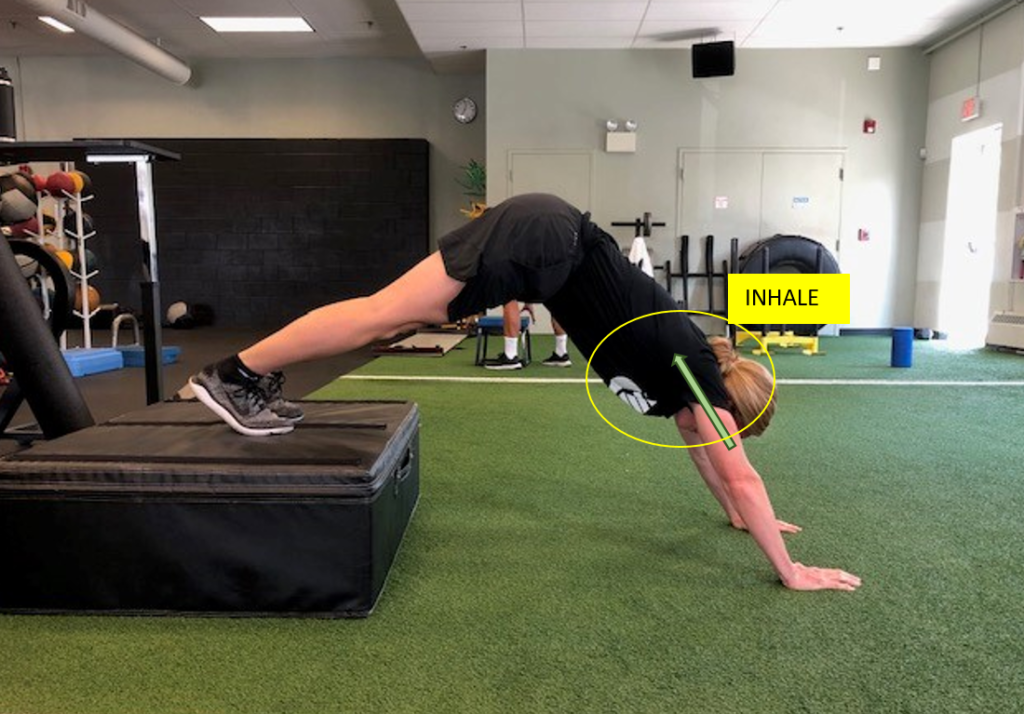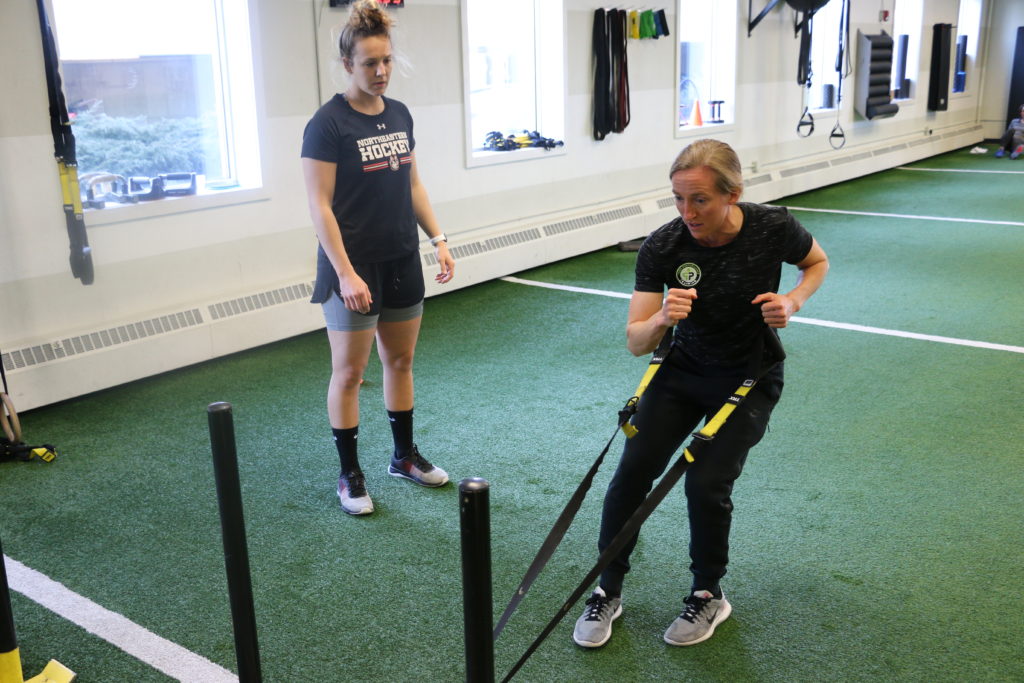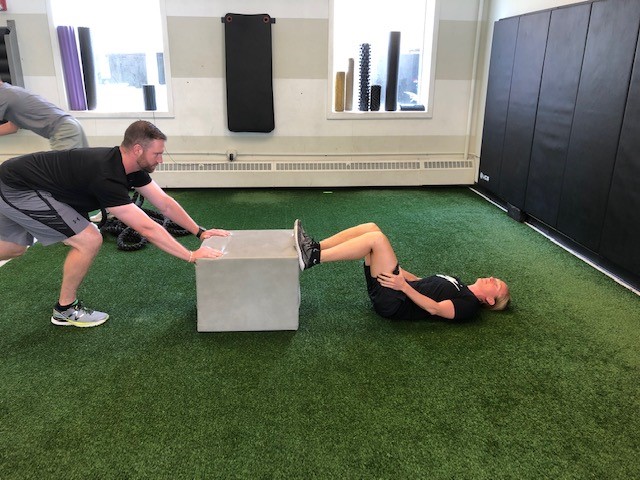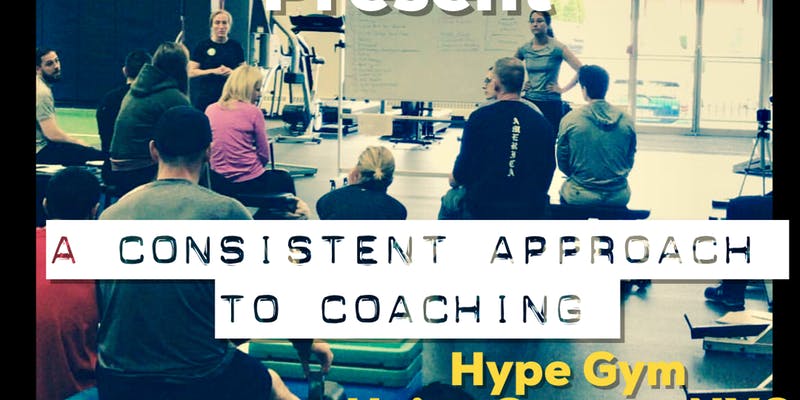Note from Zac: Do you gloss over the warm-up? Do you think a warm-up simply serves to get the heart rate going before you get to the meat and potatoes? If you are simply swinging around your arms while holding plates before you bench press, then you and your clients are sadly missing out on an opportunity to learn important movement concepts and prepare the body in a manner that will maximize the session at hand.
There is no one better to speak about making the warm-up one of the most important components of a training session than Michelle Boland aka Coach Bo.
In this post, Michelle serves up major knowledge on the three components of a warm-up, and provides an insane amount of practical application.
Prepare to build warm-ups like never before.
Enjoy.
Table of Contents
What is a Warm-up?
According to the National Strength and Conditioning Association (NSCA), “a warm-up period is now almost universally accepted as an integral part of any training session or competition”¹.
Time designated for the warm-up at the beginning of the session ought prepare the client for the session remainder. Warm-up activities should support both the client’s and session’s goals in relation to fitness progression.
Here are key questions to consider when designing the perfect warm-up:
- What does the client need to prepare for the session?
- What will be supportive strategies for their fitness and movement goals?
- What barriers does that client have toward fitness (i.e. pain, movement limitations)?
- How best and most efficiently can I intervene?
Warm-Up Components
The areas of preparation include:
- Physiological
- Biomechanical
- Psychological
Let’s break these down:
Physiological Preparation
The purpose of physiological preparation is to increase blood flow to muscle tissue and provide supportive strategies for the higher intensity activities within the training session. Physiological preparation occurs by increasing body temperature, heart rate, respiration rate, enzymatic activity, and blood flow redistribution.
An effective and time efficient way to accomplish physiological preparation would be to include aerobic activity during the warm-up period.
Here are some of my go-to warm-up circuits:
Crawling Routine
High hips during crawling can be a useful tool to invert people and improve upper body mechanics.
Dumbbell Marching and Lunging Series
Focus on getting elbows in front of body (not bicep curling dumbbells)
Aerobic Conditioning & Warm-up Routines that Incorporate Foundational Positions
These are circuits in which you choose different exercises which emphasize joint positions we are trying to achieve in the session. Perform these circuits over specific time intervals. Here are a few example durations you could use:
- 30 second work period, 30 second rest
- 20 second work period 40 second rest
- 1 minute work period 20 second rest
Below are three aerobic conditioning warm-up examples that incorporate some fundamental positions used in training:
Three Aerobic Conditioning/Warm-Up Circuit Examples That Incorporate Fundamental Positions:
| FRONT/BACK STAGGERED PROPULSIVE STEP CIRCUIT | FRONT/BACK STAGGERED LOADING STEP CIRCUIT | LATERAL STAGGERED CIRCUIT |
|
| 1.Plate Cross Medicine Ball Slam |
| 2.Loading Step Horizontal Sled Push Right Leg | 2.Slideboard |
| 3.Bilateral Hip Load Medicine Ball Slam | 3.Plate Cross Alternating Medicine Ball Toss |
| 4.Loading Step Horizontal Sled Push Left Leg | 4. Side Shuffle (add band) |
| 5. Backwards Sled Walk | |
| ||
|
I apologize for not having a personality.
Biomechanical Preparation
Biomechanical preparation utilizes interventions determined by biomechanical evaluation results. For example, if a client presents with limited hip extension on his or her right leg, I would utilize biomechanical preparatory interventions to impact that deficit. Good thing we are on Zac-elicious’ website, as he has many activities that fit in this category.
This area also includes selecting activities that prepare the client for the session’s movement requirements. For example, if a client is going to deadlift, the warm-up may include hip hinging activities sequenced with respiration. These movements can prepare for the deadlift by both accessing range of motion used in that move and loading similar tissues targeted during.
“Even if it’s not a problem [no pain], it’s still a representation of a barrier to performance” – Bill Hartman
Let’s see how to apply this concept to a couple different cases.
Case Study: Squat and Deadlift Without Pain

The warm-up activities shown above were chosen to address potential performance limiting elements found in the assessment.
The 90/90 velcro peel shown in the video below is used to address limited hip extension by facilitating gluteal contraction.
The top cue for the 90/90 velcro peel is right in the name. Pretend you have velcro from the bottom of your hips to mid-back and slowly peel the velcro off, letting your knees drift towards the ceiling.

The high box downward dog transitions into a plank and high hip bear crawl utilize inversion and respiration to improve shoulder internal and external rotation.

Case Study: Running Pain-Free

To help this client her return to running goal, we will gear all concepts, activities, and education to support her along the way.
The 90/90 velcro peel is used to address her limited hip extension. The Standing Wall Supported Reach is focused on finding and feeling specific muscles (glutes, hamstrings, adductors, and abs).
Weight shifting and reaching can be added to this activity for variety.
The Backwards Sled Walk below is used for teaching the client to transition from leg to leg while loading the heel and hip.

The assisted leg press is used to experience range of motion through the client’s knee in a controlled, slow, and predictable manner.

The assisted step-up is used to incorporate a knee dominant activity that uses cues from previous activities and to teach biomechanics within phases of gait.
Psychological Preparation
Psychological preparation may involve several components, but for the sake of this article I am going to focus on learning.
The selection of warm-up activities can be used as teaching tools that will be supportive for learning exercises later in the session. Lessons built into the warm-up will prepare the client to learn, connect, and self-correct tasks throughout the session.
Create a Learning Environment for Psychological Preparation
Lessons provide an intended purpose for cues and coaching; aimed at improving movement and skills. If I use the cue of reach, tuck, exhale in a warm-up activity, I should be including the same language within upcoming activities.
Your training principles, fundamental positions, and exercise patterns should be the basis of your lessons.
Fundamental positions include hooklying (supine), quadruped (prone), sidelying, tall kneeling, half kneeling, and lateral staggered stance.
Fundamental exercise patterns include squat, hip hinge, split squat, etc. The fundamental positions taught in the warm-up can be continued with loaded activities within the lifting section, and later in conditioning activities.
Examples of Teaching and Learning Throughout the Training Session
Below are a couple examples at which we can reinforce a specific movement throughout the workout.
Teaching the Hip Shift – Example #1
Warm-up Section: Sidelying hip shift
Linear Movement Section: Any marching, skipping, or running drills
Main Lift Section: Split Squats with hip shift, ½ kneeling position with hip shift cable row
Conditioning Section: Rope pull with hip shift, medicine ball toss with hip shift
Learning How to Center – Example #2
Warm-up: Anterior Reach Transitions (Lateral Staggered Stance to Teach Centering Concept)
Lateral Movement Section: Lateral Push Drills (teaching push mechanics)
Main Lift Section: Lateral Step-Ups, lateral staggered stance cable rows
Conditioning Section: Lateral plate cross medicine ball slam, lateral plate cross side toss, slideboard
Exhale, Tuck, and Reach – Example #3
Warm-up Section: Hooklying Tilt or Wall Supported Reach
Plyometric Section: Box Jumps
Main Lift Section: Squats, Split Squats
Conditioning Section: Medicine Ball Slams, Jumps, Lunges
Learning Creates Consistency
Creating sections of the training session based on learning experiences will allow for a consistent model. Teaching X during the warm-up section means less coaching later on in the session, especially during loaded activities. Instead of teaching new qualities, we simply reinforce keys learned during the warm-up.
Reinforcing teaching components can be as simple as saying, “remember when we did X before? It’s the same thing” or “do you remember what you felt in the warm up exercises? We are going after the same things in this lift.”
Creating connections and memories between activities will teach your clients/athletes sustainable training habits. You are moving beyond a good sweat, you are teaching them how to train.
If they are learning, they will be more independent, consistent, and exercise with the same principles when you are not with them.
An aspect of psychological preparation and creating learning opportunities for clients is asking open ended questions. Open ended questions as a coaching tactic will allow the client to problem solve, self-correct, and contribute their thoughts throughout the process. Open ended questions may include:
- “What do you feel working?” or “Where do you feel this?”
- “Why do you think we are doing this?”
- “How did you feel about that?”
- “What do you think about that?”
- “What do you think you could try next set?”
- “Do you notice a difference when we do that?”
Summary
The coach’s job is to determine what is important and provide structure during the warm-up.
Creating a process for maximizing warm-up activity usefulness should involve both an evaluation of client’s needs and selecting interventions which relate to his or her fitness and movement goals.
Incorporating aerobic activities for physiological preparation, implementing biomechanical interventions, and providing lessons for psychological preparation and learning will lead to better outcomes.
Key Points
- A warm-up adequately addresses variables to optimize subsequent performance
- Be time efficient and keep warm-up period to about 15 minutes
- Use active/aerobic types of activities for physiological preparation
- Assess clients to choose biomechanical supportive strategies that will allow clients to access motion related to their fitness and movement goals
- Use cues and coaching tactics during a warm-up to psychologically prepare clients for coaching later on in session with other activities
- Teaching during the warm-up will allow for minimal coaching later on in session and is useful for carrying over concepts and cues
Want More Detail and Execution Instruction?

Lucy Hendricks and I created a workshop that is 100% hands-on!
You will be coached and practice coaching each fundamental position and exercise pattern. These fundamental positions and exercise patterns will serve as a basis for choosing warm-up activities and teaching tools that are right for your clients.
We will problem solve, discuss variations, and make decisions based on your context and clients. The day will be filled with 100% hands-on coaching and more detail about warm-up preparation for your client’s fitness and movement goals.
Location: Hype Gym, NYC
Date/Time: Sunday, September 29th 2019. 9:00am-4:30pm (lunch 12:00pm-1:00pm)
CLICK HERE for the event’s page.
References
- Haff, G. & Triplett, N. T. (Eds.) (2016). Essentials of strength training and conditioning (4th ed). Champaign, IL: Human Kinetics.
About the Author
Michelle Boland

- Director of Education at Pure Performance Training (Needham, MA)
- Owner of Michelle Boland Training, LLC
- Previous Strength and Conditioning Coach at Northeastern University (Boston, MA)
- PhD. Exercise Physiology and M.S. Strength and Conditioning at Springfield College
- Follow on Instagram @mboland18

